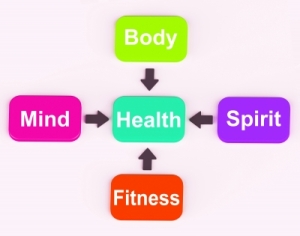A significant aspect to physical pain management is improving function. This usually takes the form of physical therapy, massage therapy, or acupuncture to improve the body’s movement and engagement in activities. Opiates have never worked on me so I have always leaned towards natural methods for any chronic pain I have. I know they work based on anecdotal and personal experience.
 I hear good things about acupuncture in temporary pain management and a similar process for trigger points called dry needling. Acupuncture is a ancient eastern medical technique where the practitioner works with the body’s meridians where the energy (chi) flows. Working with various points along the meridians can encourage energy flow, reduce inflammation, and reduce pain.
I hear good things about acupuncture in temporary pain management and a similar process for trigger points called dry needling. Acupuncture is a ancient eastern medical technique where the practitioner works with the body’s meridians where the energy (chi) flows. Working with various points along the meridians can encourage energy flow, reduce inflammation, and reduce pain.
Movement and the return to exercise will help reset the body’s ability to deal pain and find the new limits of pain. Yoga is particularly good for this. If you can’t find an instructor that does yoga for pain patients try Yoga for Pain Relief or Yoga for Emotional Balance.
 My personal favorite has become Neuromuscular Massage treatment which focuses on the movement of the body and how the movement aggravates the nerves, causing pain. Change the movement and relax the muscles to reduce the pain. It’s great work and solved my own long term shoulder and leg pain. In Colorado Springs I recommend David at Precision Manual Therapy. He is fabulous. He treats myofascial and neuralgic pain with great success. Three days of one exercise dropped my pain level from a 5 to a 2 and two more weeks eliminated it.
My personal favorite has become Neuromuscular Massage treatment which focuses on the movement of the body and how the movement aggravates the nerves, causing pain. Change the movement and relax the muscles to reduce the pain. It’s great work and solved my own long term shoulder and leg pain. In Colorado Springs I recommend David at Precision Manual Therapy. He is fabulous. He treats myofascial and neuralgic pain with great success. Three days of one exercise dropped my pain level from a 5 to a 2 and two more weeks eliminated it.
Nutrition is also vital for reducing inflammation and the corresponding pain. Please see my blog entries regarding healing with supplements.
